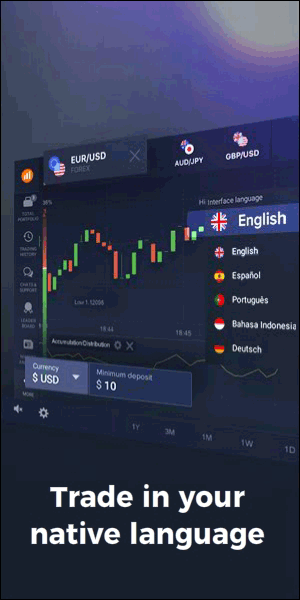Understanding Ethereum Mining: A Comprehensive Guide
Ethereum mining has become a popular topic among cryptocurrency enthusiasts and investors. As the second-largest cryptocurrency by market capitalisation, Ethereum offers a unique opportunity for miners to earn rewards. This article delves into the intricacies of Ethereum mining, exploring the process, equipment, and the pros and cons associated with it.
What is Ethereum Mining?
Ethereum mining is the process of creating and validating new blocks on the Ethereum blockchain. Miners use computational power to solve complex mathematical problems, which in turn secures the network and processes transactions. Successful miners are rewarded with Ether (ETH), the native cryptocurrency of the Ethereum network.
How Does Ethereum Mining Work?
Ethereum mining relies on a consensus algorithm called Proof of Work (PoW). Here’s a step-by-step breakdown of how it works:
- Transaction Validation: Miners collect pending transactions from the network and validate them.
- Block Creation: Validated transactions are grouped into a new block.
- Hash Calculation: Miners compete to solve a cryptographic puzzle by finding a hash that meets the network’s difficulty target.
- Block Addition: The first miner to solve the puzzle broadcasts the new block to the network, which is then added to the blockchain.
- Reward Distribution: The successful miner receives a block reward in Ether, along with transaction fees from the included transactions.
Equipment Needed for Ethereum Mining
To mine Ethereum effectively, you need specialised hardware and software. Here’s a list of essential equipment:
- Graphics Processing Unit (GPU): High-performance GPUs are crucial for efficient mining. Popular choices include NVIDIA and AMD cards.
- Mining Rig: A dedicated mining rig with multiple GPUs can significantly increase your mining power.
- Power Supply Unit (PSU): A reliable PSU is necessary to power your mining rig.
- Motherboard: Choose a motherboard that supports multiple GPUs.
- Cooling System: Mining generates a lot of heat, so an effective cooling system is essential to prevent overheating.
- Mining Software: Software like Ethminer, Claymore, or PhoenixMiner is used to connect your hardware to the Ethereum network.
- Ethereum Wallet: A secure wallet to store your mined Ether.
Setting Up Your Mining Rig
Setting up a mining rig involves several steps:
- Assemble the Hardware: Install the GPUs, PSU, motherboard, and cooling system in your mining rig.
- Install the Operating System: Choose an operating system like Windows or Linux and install it on your rig.
- Install Mining Software: Download and configure your chosen mining software.
- Join a Mining Pool: Joining a mining pool can increase your chances of earning rewards by combining your computational power with other miners.
- Start Mining: Once everything is set up, start the mining software and begin mining Ethereum.
Pros of Ethereum Mining
Ethereum mining offers several advantages:
- Potential for Profit: Successful miners can earn significant rewards in Ether, which can be converted to fiat currency or held as an investment.
- Network Security: By participating in mining, you contribute to the security and decentralisation of the Ethereum network.
- Learning Opportunity: Mining provides a hands-on way to learn about blockchain technology and cryptocurrency.
- Community Support: The Ethereum mining community is active and supportive, offering resources and assistance to new miners.
Cons of Ethereum Mining
However, there are also some drawbacks to consider:
- High Initial Investment: Setting up a mining rig requires a significant upfront investment in hardware and equipment.
- Energy Consumption: Mining consumes a lot of electricity, leading to high energy costs and environmental concerns.
- Technical Challenges: Setting up and maintaining a mining rig can be technically challenging, especially for beginners.
- Market Volatility: The value of Ether can be highly volatile, affecting the profitability of mining.
- Difficulty Adjustments: As more miners join the network, the mining difficulty increases, making it harder to earn rewards.
Ethereum 2.0 and the Future of Mining
Ethereum is transitioning from Proof of Work (PoW) to Proof of Stake (PoS) with the Ethereum 2.0 upgrade. This shift will have significant implications for miners:
- Reduced Mining Rewards: PoS will eliminate the need for mining, reducing the rewards available to miners.
- Lower Energy Consumption: PoS is more energy-efficient than PoW, addressing environmental concerns associated with mining.
- Increased Network Security: PoS is expected to enhance the security and scalability of the Ethereum network.

Conclusion
Ethereum mining offers both opportunities and challenges. While it can be profitable and provides a way to support the Ethereum network, it also requires a significant investment in hardware and energy. As Ethereum transitions to Proof of Stake, the landscape of mining will change, potentially reducing the rewards for miners. However, the skills and knowledge gained from mining can be valuable in the evolving world of cryptocurrency.
Q&A Section
- Q: What is Ethereum mining?
A: Ethereum mining is the process of creating and validating new blocks on the Ethereum blockchain using computational power to solve complex mathematical problems. - Q: What equipment do I need to mine Ethereum?
A: You need a high-performance GPU, a mining rig, a power supply unit, a motherboard, a cooling system, mining software, and an Ethereum wallet. - Q: How does Ethereum mining work?
A: Miners validate transactions, create new blocks, solve cryptographic puzzles, and add blocks to the blockchain, earning rewards in Ether. - Q: What are the pros of Ethereum mining?
A: Potential for profit, network security, learning opportunities, and community support. - Q: What are the cons of Ethereum mining?
A: High initial investment, energy consumption, technical challenges, market volatility, and difficulty adjustments. - Q: How will Ethereum 2.0 affect mining?
A: Ethereum 2.0 will transition to Proof of Stake, reducing mining rewards, lowering energy consumption, and increasing network security. - Q: Is Ethereum mining profitable?
A: Profitability depends on factors like hardware costs, energy consumption, and the value of Ether. - Q: Can I mine Ethereum with a regular computer?
A: While it’s possible, mining with a regular computer is not efficient and unlikely to be profitable compared to using specialised hardware. - Q: What is a mining pool?
A: A mining pool is a group of miners who combine their computational power to increase their chances of earning rewards. - Q: How do I start mining Ethereum?
A: Assemble your mining rig, install the operating system and mining software, join a mining pool, and start mining.
For more detailed information on Ethereum mining, you can refer to this popular article: How to Mine Ethereum.







